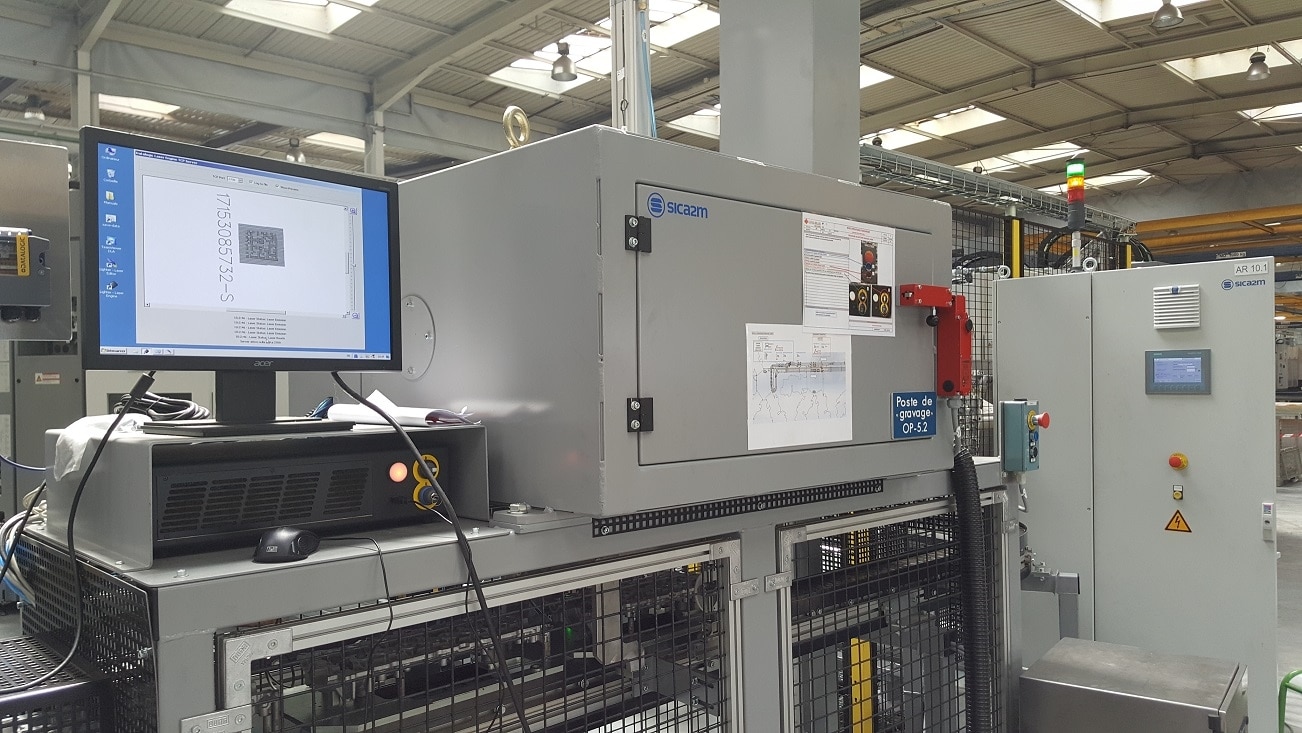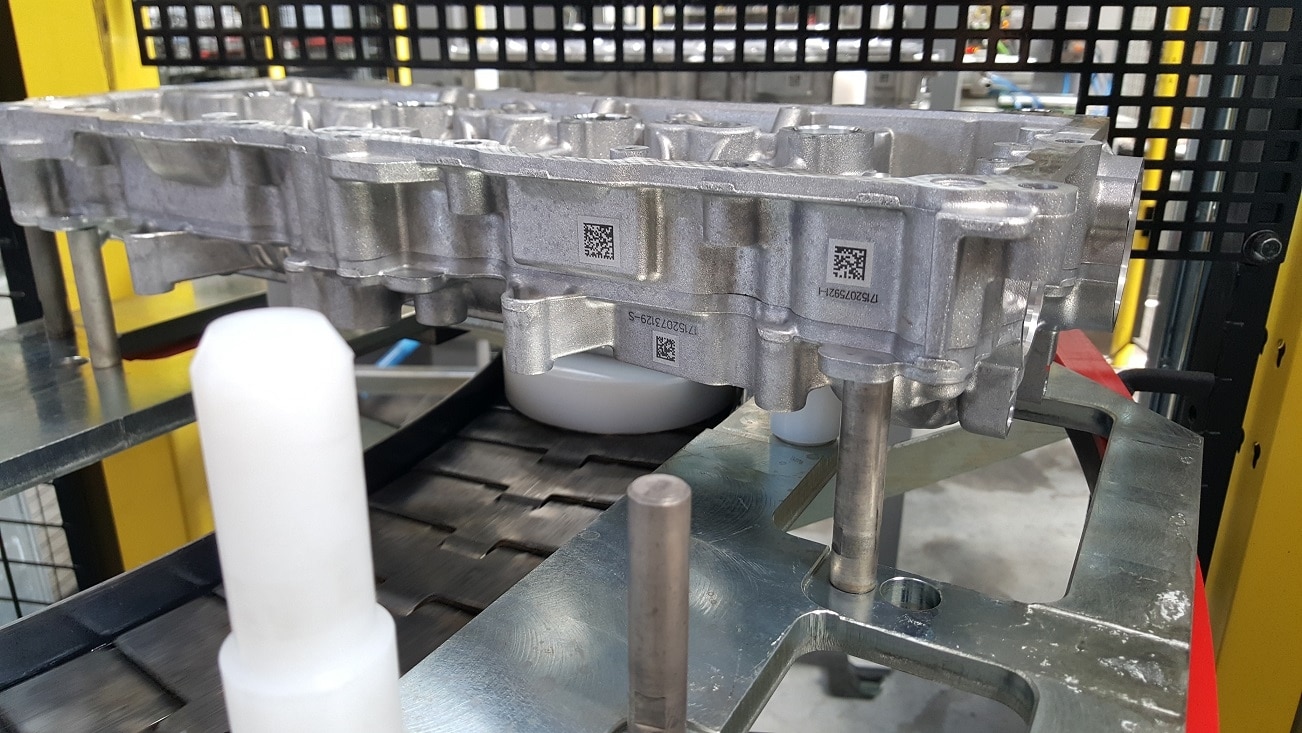Materials
Laser marking on aluminium
Characteristics
Aluminium marking solution

Three sets consisting of GRAPHIX Inline 20W marking lasers and DATALOGIC Matrix 300N readers are on the production lines. This equipment ensures the traceability of the camshaft housings in aluminium casting. Each station is designed as follows:
- A laser protection enclosure positioned above a conveyor with an access hatch from below.
- The camshaft bearings are conveyed on pallets and stopped under the laser station.
- A jack (up and down) positions the tool in the marking area with the part in the station. The station is then safe, and the part is marked.
If the marking is validated after proofreading the Datamatrix code, the part is cleared out.
Otherwise, the marking is erased by laser overlap, then marked again.
The laser is controlled via the Ethernet TCP-IP communication protocol. The complete cycle is managed by the line PLC.
Discover various automotive marking applications
Technical details
Cycle time
20 to 30 seconds
Type of marking
Two marking zones with control of a Z axis






